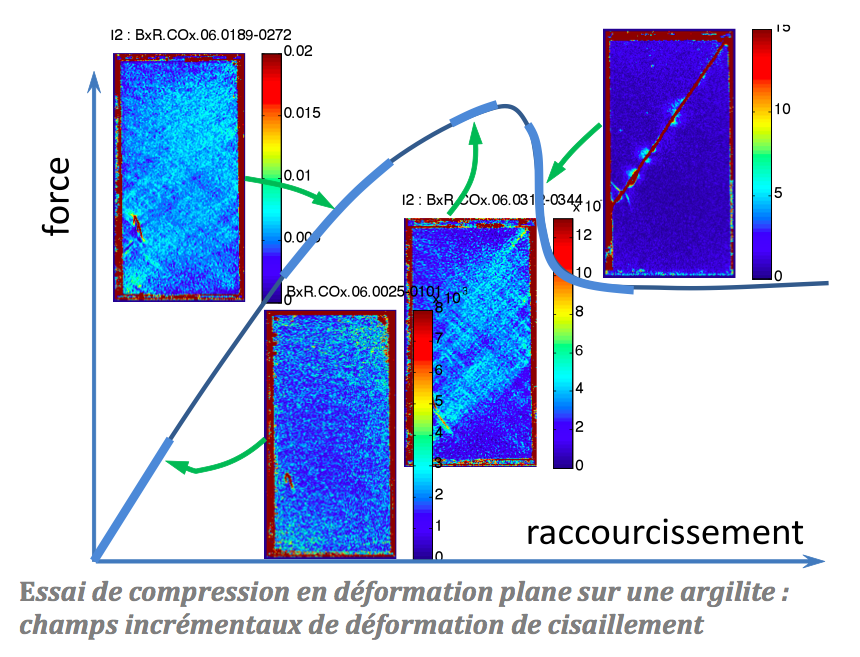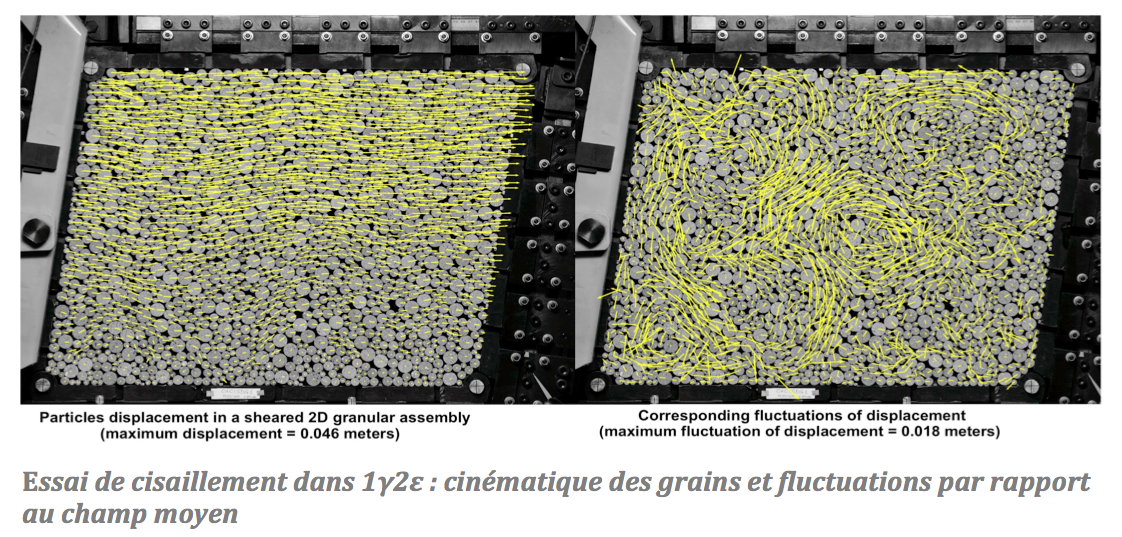- Share
- Share on Facebook
- Share on X
- Share on LinkedIn
Keywords: experimental and numerical micromechanics of granular media, multi-scale approaches, numerical homogenization, phenomenological models, cyclic and/or dynamic behavior, instabilities and degradation, field measurements.

The study of soil and rock behavior, which is the foundation of geomechanics, continues to be enriched from the point of view of both experimentation and modeling. On the basis of the work carried out in the previous decades by Grenoble geomechanics on mechanical tests, the formulation of constitutive laws and the emergence of discontinuities related to failure, new approaches like discrete element methods, high-resolution tomography and digital image correlation, now make it possible to renew the problems and open up new perspectives for experimentation and modeling. The elementary phenomena at work in geomaterials are now observable, quantifiable, and modelable at scales smaller than the traditional observation of the soil and rock mechanics laboratory. The consideration of multiple scales in the analysis of the response of geomaterials and geomechanical structures has become a major issue in our group, both for experimentation and for numerical calculations. Heterogeneity, variability, existing or emerging discontinuities are apprehended more finely with these new practical and conceptual tools. Original test machines, innovative imaging tools, new software approaches are developed and intensively used. However, the deepening of the knowledge of complex phenomena observable at the macroscopic scale is not left aside and on the contrary is nourished by the opening brought by the taking into account of the microscopic scales: we speak here about phenomena specific to geomaterials and to the multi-physical couplings which develop there, such as for example the cyclic behavior, the unsaturated or the internal erosion, which are the subject of advanced studies in our group.

- Share
- Share on Facebook
- Share on X
- Share on LinkedIn